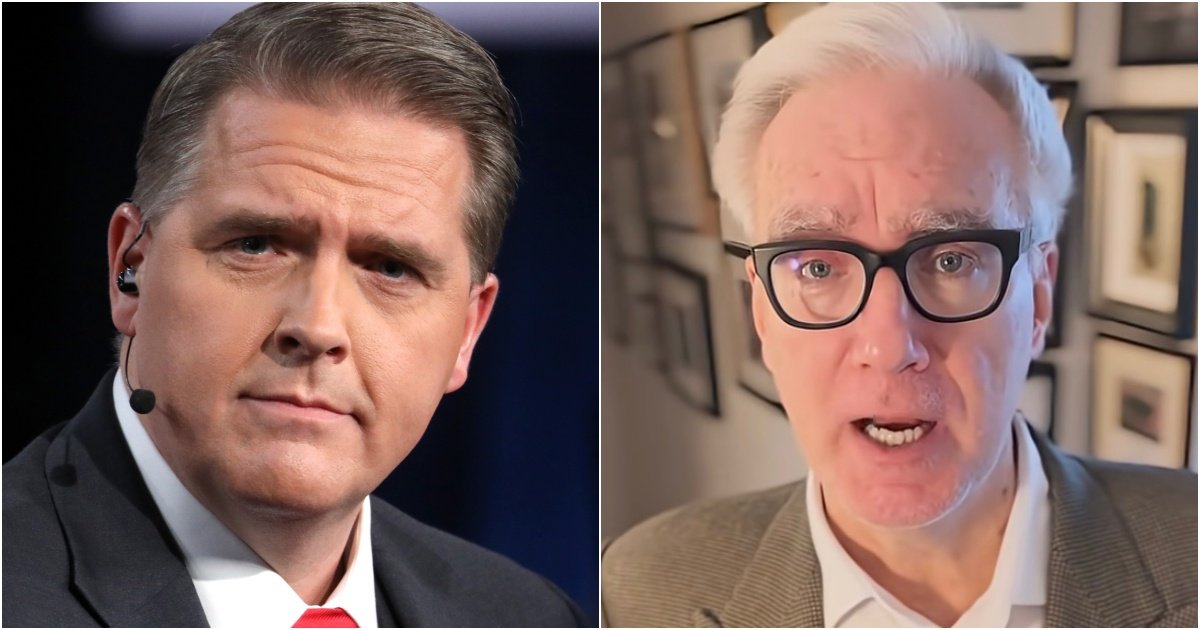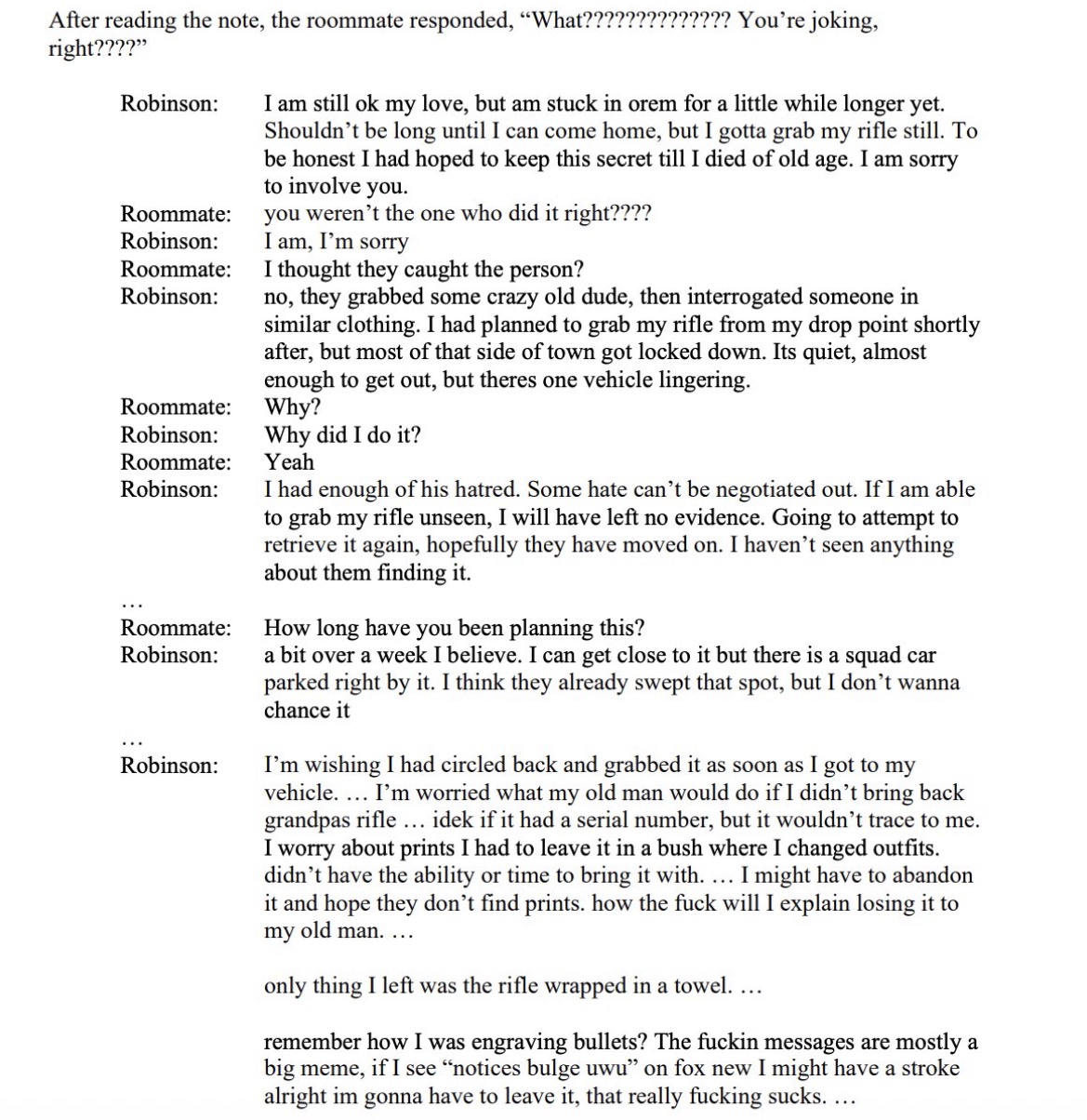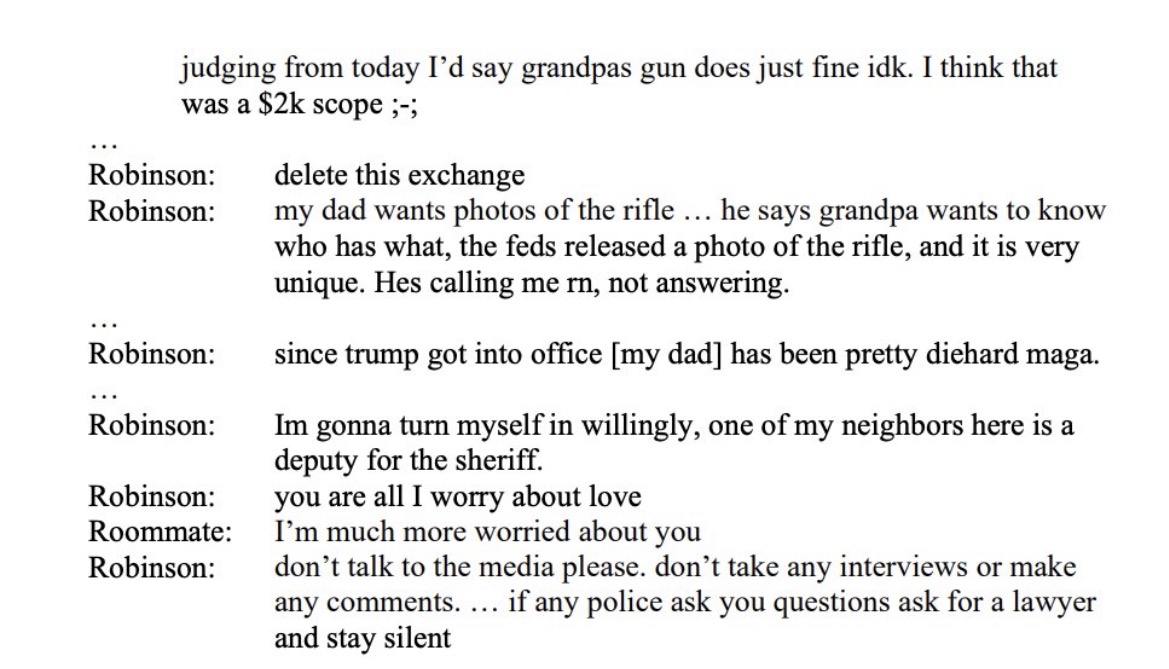Politics
USPTO wants to push AI deeper into its processes

The U.S. Patent and Trademark Office has already invested heavily in artificial intelligence capabilities. Its employees have access to several tools to review documents and reduce the burden on examiners for administrative and clerical tasks.
Through a new request for information, the USPTO wants to accelerate its use of AI tools.
In the RFI, USPTO says it’s looking for technology that could improve the efficiency in the patent and trademark examining processes. Some examples the agency highlighted in the RFI are those around IT improvements, robotic process automation (RPA) bot development/usage, and new code or ideas to improve current processes.
Greg Vidovich, the acting deputy commissioner for patents, said vendors should submit their feedback through the RFI to help the agency expand their current capabilities.
“Essentially [the RFI] amounts to a summary of the use of AI/machine learning for completion of a comprehensive search report with an analysis between the prior art found and the claims in the application. In the second bullet, this comes down to utilizing artificial intelligence to draft office actions to properly determine formality objections, for example, in the abstract specification claims or figures or rejections,” he said during USPTO’s industry day on June 17. “In the third bullet, again, utilizing artificial intelligence to create or complete office action based on input from the examiner. So anything that the examiner can provide, provide input, it would create or draft an office action.”
RFI asks 7 questions
One of the interesting things about the RFI is USPTO is looking for low cost or no cost services.
That was one of the seven questions USPTO asked for feedback on:
“Discuss your willingness to provide a solution(s) at low or no cost or in exchange for non-monetary considerations. If a low-cost solution or non-monetary benefit is of interest, describe how you/your organization defines low-cost and what non-monetary benefit might be of interest.”
Another question asked vendors to “describe any innovative tools or solutions, especially AI-based tools or solutions, you have developed that could assist in the comprehensive search and analysis of prior art.”
USPTO posted the RFI on SAM.gov on June 4. Vendors had until June 10 to submit questions and USPTO just extended the due date for responses to July 1.
Kristen Fuller, the director of the Office of Procurement at USPTO, said once the RFI closes, the agency will have the ability to reach out to respondents and set up one-on-one meetings to learn more about their capabilities or how they responded.
As for a possible solicitation, Fuller said she wasn’t ready to talk about USPTO’s plans for issuing one.
But given what USPTO has done so far and the potential it sees in AI capabilities, it’s clear the agency will want to continue to have access to these tools.
Jamie Holcombe, USPTO’s chief information officer, said the agency’s AI journey started four years ago.
“We first took inventory of our nine petabytes of detailed patent data, which anyone can download from our open data portal at data.uspto.gov to see for yourself what insights are hidden in this treasure trove of intellectual property data,” Holcombe said. “We crafted machine learning pilots, which led to production applications in the areas of classification and citation as well as prior art searching and fraud detection. The biggest lesson we learned was that all AI requires knowing your data, knowing data structure, data elements, data flow and, most importantly, data security. We realize that we are now in an era of intelligent computing where we succeed only by combining data, AI and infrastructure security for results and measurable outcomes. Intelligent computing needs curated data, creating a golden data set, the source where to start, because training with incorrect or non-aligned data often results in the application becoming what I label ‘learning disabled.’ Most others call it having hallucinations with inaccurate outcomes.”
Jamie Holcombe is the CIO for the U.S. Patent and Trademark Office.
Holcombe said he believes USPTO is just at the beginning of its journey to use AI, despite USPTO having several ongoing programs using AI.
Vidovich said one tool is an AI-assisted feature for examiners that helps them find similar documents more effectively while performing a search.
“It allows the examiner to find documents that are related to a document they may be reviewing as part of an existing search. This tool is part of our patents end-to-end (PE2E) search tool. It’s an internal search tool built on a web-based, modern platform that’s in the cloud,” he said. “With More Like This Document (MLTD) searches across U.S. patents, pre-grant publications and foreign patents, it’s over 120 million fully indexed documents that the examiners have access to that this tool runs against. It’s intended to supplement the examiners, allowing them to search to quickly find relevant prior art and improve patent quality.”
Existing AI capabilities
Since USPTO launched this tool in March 2024, Vidovich said examiners have used this almost 850,000 times in the office, and the adoption rate for 2025 is increasing.
A second tool called the Doc Code quality control is a newer automation tool to review every incoming document from applicant via patent center.
“What we’ve done internally is we’ve built an automation tool in house. It’s going to be designed to review every incoming document from the applicant via the Patent Center,” Vidovich said. “The tool will essentially review the applicant document, and it looks at the Doc Code that’s been applied by the applicant, and then it will suggest, if it’s not correct, an alternative to us internally to make that change. Why this is important? We get over 18 million documents filed in the office, and this automation tool is going to be designed to run across all those documents to make sure these document codes are correct so they translate through our systems properly. We just started full production … and the great thing about this is it’s going to reduce contract dependencies and provide cost savings to the agency.”
Along with the RFI and existing tools, USPTO has some AI tools in early test phases that it plans on expanding. Many of the tools are using generative AI.
Deborah Stephens, USPTO’s deputy CIO, said the agency gives early adopters access to the AI Lab, where teams can build tests, validate use cases and assess impacts to their business.
Stephens said one of USPTO’s test GenAI tools is called SCOUT: Searching, Consolidating, Outlining and Understanding Tool.
“We leverage SCOUT to assist in code development, detect improper filings, assist in cybersecurity threat detection and compliance, as well as monitoring and correlation,” she said. “Like many of you, we saw the global landscape of AI unfolding and its potential. In May 2023, a small federal team began using Frontier AI models in secure, appropriate guardrails, walled off. That was only available to this handful of highly technical internal users. Shortly thereafter in December 2024, we deployed a homegrown tool with mostly federal team members. It was a simply an easier way for team members to access those Frontier AI models and expand our user base and develop some additional use cases. Then fast forward to March 2025, we got our Alpha version with 40-plus users trying very specific use cases. And now in June 2025, we’re very pleased to have over 200 Alpha users, and later this summer, we will release a beta version for a larger user base.”
Stephens added USPTO believes SCOUT has proven its capabilities are valuable and making a difference for employees, which is why expansion is on the near term horizon.
The post USPTO wants to push AI deeper into its processes first appeared on Federal News Network.
Politics
Black Lives Matter Activist in Boston Pleads Guilty to Federal Fraud Charges – Scammed Donors to Fund Her Lifestyle

Screencap of YouTube video.
A Black Lives Matter activist in Boston named Monica Cannon-Grant pleaded guilty to federal charges this week, admitting that she scammed donors and used their money to fund her own lavish lifestyle.
Cannon-Grant was previously held up as an admired figure. The city of Boston named her the Bostonian of the year at one point for her ‘social justice activism’ and she was even recognized by the Boston Celtics basketball team for her efforts.
She is now facing a minimum of two years in prison.
The New York Post reports:
BLM-linked activist admits conning donors to fund her lavish lifestyle
A once-celebrated Boston social activist has pleaded guilty to defrauding donors — including Black Lives Matter — out of thousands of dollars that she used as a personal piggy bank.
Monica Cannon-Grant, 44, pleaded guilty Monday to 18 counts of fraud-related crimes that she committed with her late husband while operating their Violence in Boston (VIB) activists group, according to the US Attorney’s Office in Massachusetts.
The activist scammed money — including $3,000 from a BLM group — while claiming it was to help feed children and run protests like one in 2020 over the murder of George Floyd and police violence.
Cannon-Grant also conned her way into getting $100,000 in federal pandemic-related unemployment benefits — which she used to pay off her personal auto loan and car insurance policy.
But she has now confessed to transferring funds to personal bank accounts to pay for rent, shopping sprees, delivery meals, visits to a nail salon — and even a summer vacation to Maryland.
Just amazing.
Monica Cannon-Grant stole from donors, scammed the government, and lived it up while preaching about oppression. BLM grift is the only nonprofit where fraud is part of the mission statement. https://t.co/ir3q9lqYrh
— Matthew Newgarden (@a_newgarden) September 23, 2025
BREAKING: BLM activist Monica Cannon-Grant pleads guilty to 27 fraud charges, misusing over $1M from Violence in Boston for personal gain. Echoes Sir Maejor Page’s $450K scam conviction. A wake-up call for nonprofit accountability. pic.twitter.com/N9vvD369gB
— (@pr0ud_americans) September 14, 2025
Here’s a local video report:
She should pay back every penny.
The post Black Lives Matter Activist in Boston Pleads Guilty to Federal Fraud Charges – Scammed Donors to Fund Her Lifestyle appeared first on The Gateway Pundit.
Politics
Keith Olbermann Backpedals Furiously With Apology for Threatening CNN’s Scott Jennings – Jennings Responds (VIDEO)

As the Gateway Pundit reported yesterday, former MSNBC host and generally unhinged leftist Keith Olbermann, appeared to threaten CNN’s conservative pundit Scott Jennings on Twitter saying, ‘You’re next motherf**ker.’
Well, Olbermann may have gotten a phone call or a visit from the FBI because today he walked back those comments with a full-throated apology.
RedState has an update:
To quickly recap, Scott Jennings, a Salem Media Network radio host and conservative CNN political commentator, reacted to breaking news on Monday that Kimmel had been reinstated by tweeting, “So basically his employer suspended him for being an insensitive pr**k, and we don’t live in an authoritarian regime? Got it.”
This enraged Olbermann, who proceeded to tweet what many, including Jennings, perceived to be a threat. “You’re next, motherf**ker. But keep mugging to the camera.” Jennings tagged Patel and included a screengrab of the tweets in response.
Though the FBI hasn’t commented as to whether an investigation was launched, Olbermann ostensibly appears to have thought twice about what he tweeted and deleted, apologizing profusely in tweets posted on Tuesday and claiming what he wrote was “misinterpreted”:
See Olbermann’s tweet below:
I apologize without reservation to @ScottJenningsKY
Yesterday I wrote and immediately deleted 2 responses to him about Kimmel because they could be misinterpreted as a threat to anything besides his career. I immediately replaced them with ones specifying what I actually meant. pic.twitter.com/SPWLb73nEk
— Keith Olbermann (@KeithOlbermann) September 23, 2025
I oppose and condemn political violence, and the threat of it. All times are the wrong time to leave even an inadvertent impression of it – but this time is especially wrong
I should've acknowledged the deletion and apologized yesterday. I'm sorry I delayed.
— Keith Olbermann (@KeithOlbermann) September 23, 2025
Scott Jennings, always a class act, offered this hilarious response:
SCOTT JENNINGS: “Marking myself SAFE from that NUT, Keith Olbermann!” pic.twitter.com/EYZX6vm5Oh
— Dustin Grage (@GrageDustin) September 23, 2025
Keith Olbermann really needs help. The guy is just so out of control.
The post Keith Olbermann Backpedals Furiously With Apology for Threatening CNN’s Scott Jennings – Jennings Responds (VIDEO) appeared first on The Gateway Pundit.
Politics
Where is Lance Twiggs? Kirk Assassin’s Transgender Lover Has Vanished

 Charlie Kirk assassin Tyler Robinson and roommate Lance Twiggs
Charlie Kirk assassin Tyler Robinson and roommate Lance Twiggs
Charlie Kirk assassin Tyler Robinson lived with his transgender partner – a male-to-female trans named Lance “Luna” Twiggs.
The FBI used Robinson’s texts with his transgender partner to solidify that Robinson was the assassin. Lance Twiggs has not been charged with any crime; however, federal authorities are still investigating.
Last week, Utah authorities released the text exchange between Tyler Robinson and his transgender lover, Lance Twiggs, sent shortly after Kirk’s assassination.
Utah County District Attorney Jeff Gray announced seven charges against Charlie Kirk assassin Tyler Robinson. They will also be seeking the death penalty.
Robinson was charged with:
– Count 1: Aggravated murder (capital offense)
– Count 2: Felony reckless discharge of a firearm causing bodily injury
– Count 3: Felony obstruction of justice for hiding the firearm
– Count 4: Felony obstruction of justice for discarding the clothing he wore during the shooting
– Count 5: Witness tampering for asking roommate to delete incriminating messages
– Count 6: Witness temperating for demanding trans roommate stay silent, and not speak to police
– Count 7: Commission of a violent offense in the presence of a child
Jeff Gray released the chilling texts between Tyler Robinson and his “love” Lance Twiggs.
Read the text exchange here:
 Tyler Robinson texts with transgender lover Lance Twiggs / 1
Tyler Robinson texts with transgender lover Lance Twiggs / 1
 Kirk assassin Tyler Robinson texts with transgender lover Lance Twiggs / 2
Kirk assassin Tyler Robinson texts with transgender lover Lance Twiggs / 2
Lance Twiggs was reportedly cooperating with the FBI, however, according to the Daily Mail he has seemingly vanished.
“If [Lance Twiggs] ever comes back, it will be in a body bag,” a neighbor said to the Daily Mail. “That’s not a threat – I’m just saying that there are so many people who want a piece of him he’d be mad to show his face in public again. This was a generational event.”
The Daily Mail reported:
The Trans boyfriend of Charlie Kirk’s alleged assassin has fled their former lovenest – and locals tell the Daily Mail they never want to see him again.
Lance Twiggs, 22, was led away for questioning when police swooped on the smart three-bed condo he shared with accused gunman Tyler Robinson, 22.
Shaken neighbors say the part time plumber has not been back to the $320,000 property in St. George, Utah – one declaring: ‘Good riddance. I never want to see either of them again.’
His beaten-up Infinity compact is still parked in his space with his work gear tossed across the back seat and a sandwich wrapper and a drink on the front passenger seat.
Upstairs lights have been left on for more than a week and notes and Amazon packages are piling up outside the home owned by Twiggs’s devout Mormon family.
The post Where is Lance Twiggs? Kirk Assassin’s Transgender Lover Has Vanished appeared first on The Gateway Pundit.
-

 Entertainment6 months ago
Entertainment6 months agoNew Kid and Family Movies in 2025: Calendar of Release Dates (Updating)
-

 Entertainment3 months ago
Entertainment3 months agoBrooklyn Mirage Has Been Quietly Co-Managed by Hedge Fund Manager Axar Capital Amid Reopening Drama
-
Tech6 months ago
The best sexting apps in 2025
-

 Entertainment5 months ago
Entertainment5 months agoKid and Family TV Shows in 2025: New Series & Season Premiere Dates (Updating)
-

 Tech7 months ago
Tech7 months agoEvery potential TikTok buyer we know about
-
Tech7 months ago
iOS 18.4 developer beta released — heres what you can expect
-

 Tech7 months ago
Tech7 months agoAre You an RSSMasher?
-

 Politics7 months ago
Politics7 months agoDOGE-ing toward the best Department of Defense ever



